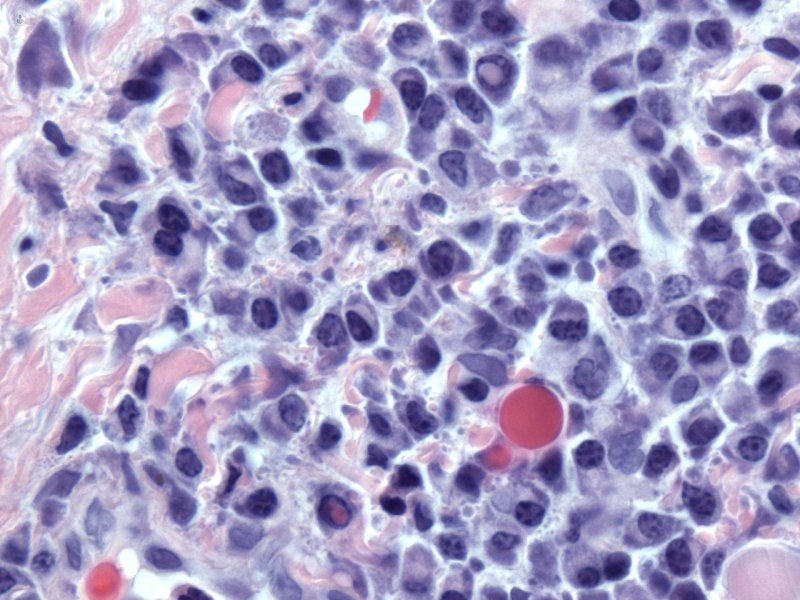Multiple Myeloma Treatment
Written by:In recent years much progress has been made in the field of multiple myeloma. The innovations have helped control the disease in many patients without having to undergo chemotherapy.
The most effective treatment of multiple myeloma is a combination of drugs administered in monthly cycles, which is called the induction phase. The treatment will be different depending on whether patients are lower or higher than the 65-70 years. In patients under this age must make an autologous transplant after induction for best results.
In addition to antitumor treatment, patients must receive treatment and prevention of major complications of the disease.
Bone complications of multiple myeloma
 The bone pain is one of the worst problems of multiple myeloma. Analgesics should be used to remove increasing intensity. In more severe cases the therapy is very useful.
The bone pain is one of the worst problems of multiple myeloma. Analgesics should be used to remove increasing intensity. In more severe cases the therapy is very useful.
The major bone complications of multiple myeloma include bone fractures, because the bone is difficult to heal the sick. It is often necessary to help orthopedic appliances. It is therefore important to prevent osteoporosis, bone disease and fractures.
It is advisable to maintain a gentle but continuous physical activity and avoid prolonged bed rest.
In addition, hypercalcemia may also occur, namely that out calcium from bone to blood excessively. This may cause vomiting, constipation, dehydration and acute renal failure; , and it can be prevented by maintaining good hydration and with continued therapy with bisphosphonates.
Neurological complications of multiple myeloma
The compression of the spinal cord or vertebral crush accumulation of plasma cells but may occur abruptly constituting a medical emergency. Symptoms include severe back pain, loss of strength and sensitivity to irradiation and leg discomfort (cramps, pricking, weakness, etc).
Specialized treatment in multiple myeloma team
Multiple myeloma is one of the most difficult to treat hematologic diseases, making it difficult to make a general diagnosis. In addition, there are factors that indexed on him, as genetic studies, age and response to treatment.
What is clear is that it is imperative that the patient is put in the hands of a specialist in hematology with experience in the treatment of multiple myeloma and a center that offers a multidisciplinary care for other specialties needed to support treatment: Unit pain, Traumatology, physiotherapy, radiotherapy, etc ...
For the indolent myeloma, diagnosis is longstanding survival, although there are cases that are to be treated as symptomatic myelomas. In all other cases, the early establishment of an initial treatment with new schemes combined agents a response is achieved in over 80% of cases.


